If you like music, I highly recommend the Buddy Holly Center in Lubbock, Texas. I was going to skip it, but after visiting the Silent Wings Museum, I was offered half off, so I tried it out. I’m glad I did, and I think you should too!
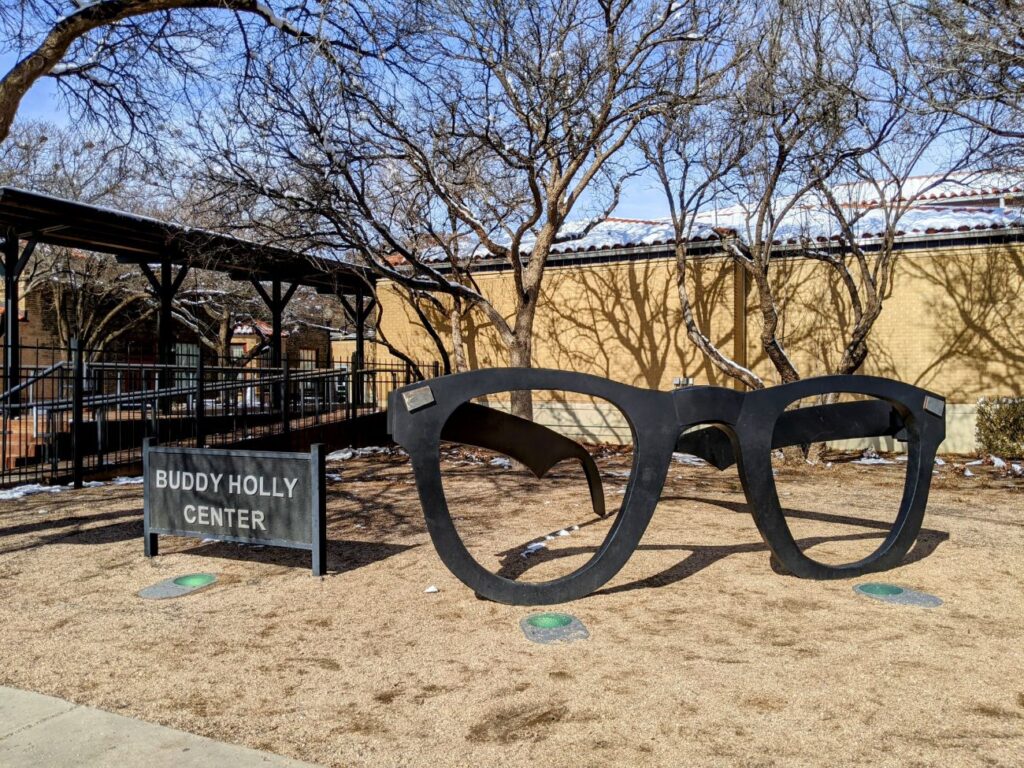
History of the Buddy Holly Center
Before we step into the museum, you’ll notice that it looks like an old train station. And indeed, this building was a train depot back in the 1930-1950 range. After it fell out of use, it was used as storage for a while. Then in the ’70s, a developer renovated it back to its original Spanish Renaissance glory, and it became The Depot Restaurant and Bar, a popular spot for over 20 years.
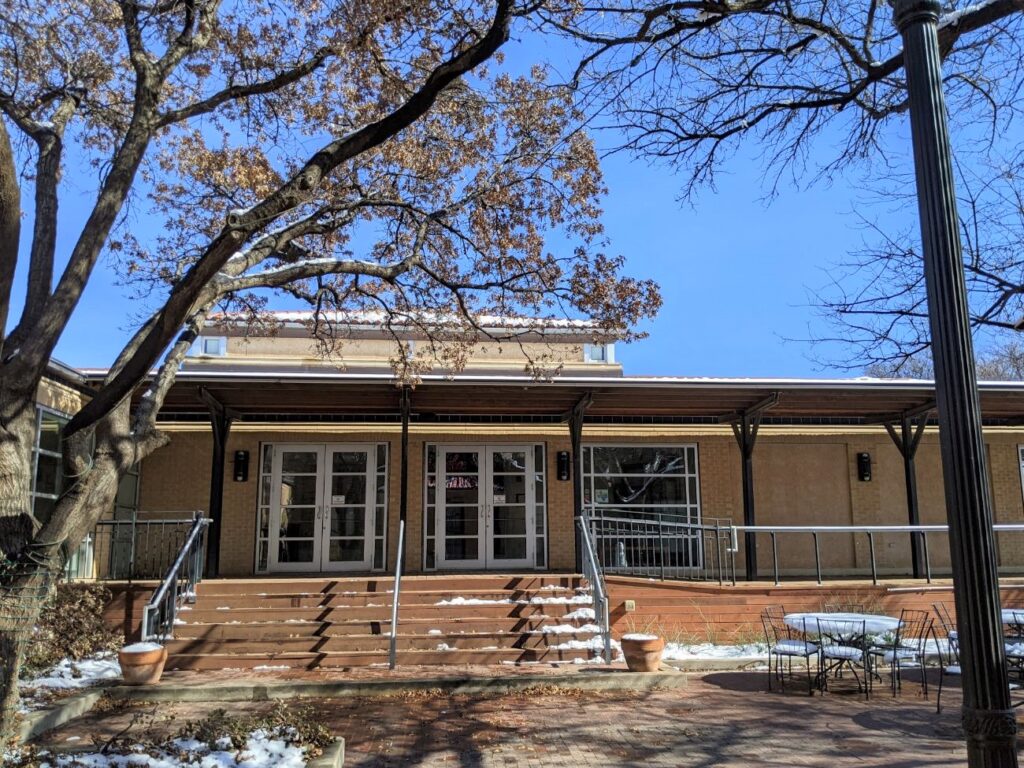
In the ’90s, Lubbock bought the historic building and turned it into the Buddy Holly Center. The area where the trains pulled in is now a patio with seating (left over from its restaurant days), and passenger waiting areas were turned into a contemporary art gallery. The old freight storage areas are the gift shop and offices. And a new wing utilizes the restored wooden freight platform and houses the Buddy Holly collection and memorabilia.
It’s also worth noting that no photography is allowed in the museum, so don’t have very many pictures for you today. Make sure to read on to see what’s inside.
The Buddy Holly Center
The Buddy Holly Center resides in Lubbock because Charles Hardin Holley (with an “e”) was born here! You can take a road trip to more locations having to do with his life around town, but this museum is the center of the action.
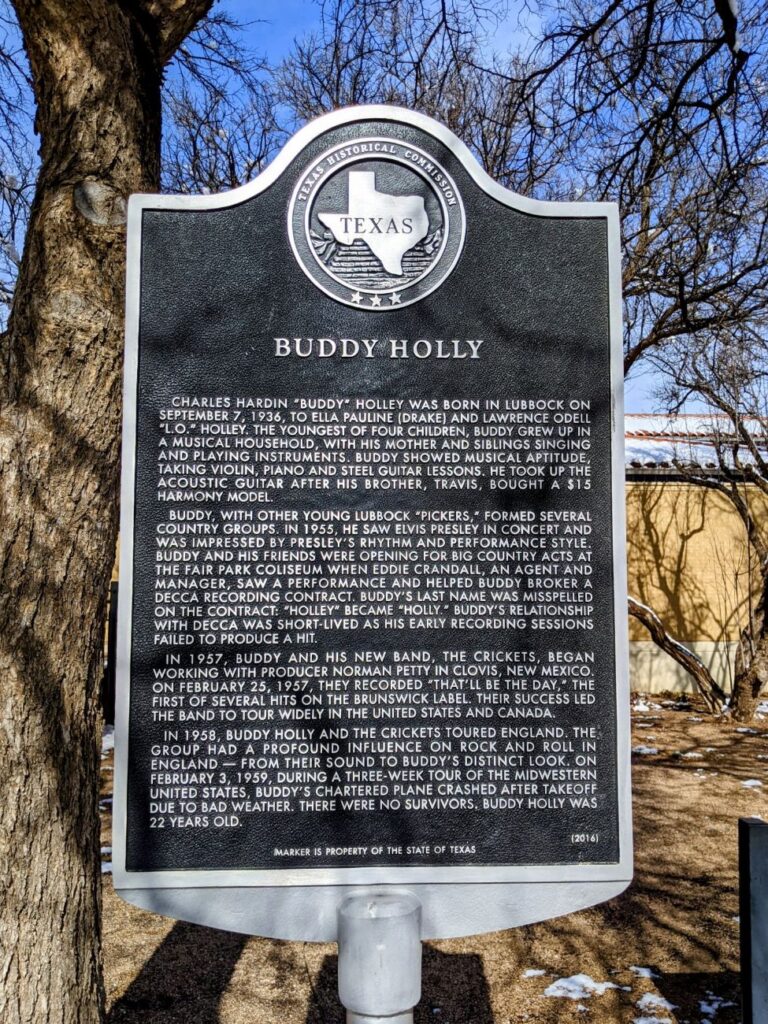
Inside, there are three rooms dedicated to Buddy Holly. The main room is shaped like a guitar body! There’s a LOT to read in this room, so I recommend starting with the short film in the small theater room to the left. That gives you a good overview of his life, influences, and legacy, so you can better skim the rest of the collection.
In the main room, alcoves along the edge of the curving wall display items from Holly’s life. There are childhood toys, teenage hobbies (leatherwork), and souvenirs from his high school girlfriend. Then you get into his musical efforts – a radio show and a little band that would play for any event they could find out about. One member said they’d “play for the opening of a pack of cigarettes.”
Then after high school, Buddy formed The Crickets, got a record contract, and had his first hit, That’ll Be The Day. This launched him and the band into touring not just the US but also Australia and the United Kingdom. Memorabilia from the entire period fill the walls – photos, performing clothes, gold records, and more. His contract is on display, which misspells his last name, dropping the “e.” Holly just went with it to secure the contract, and that became his stage name.
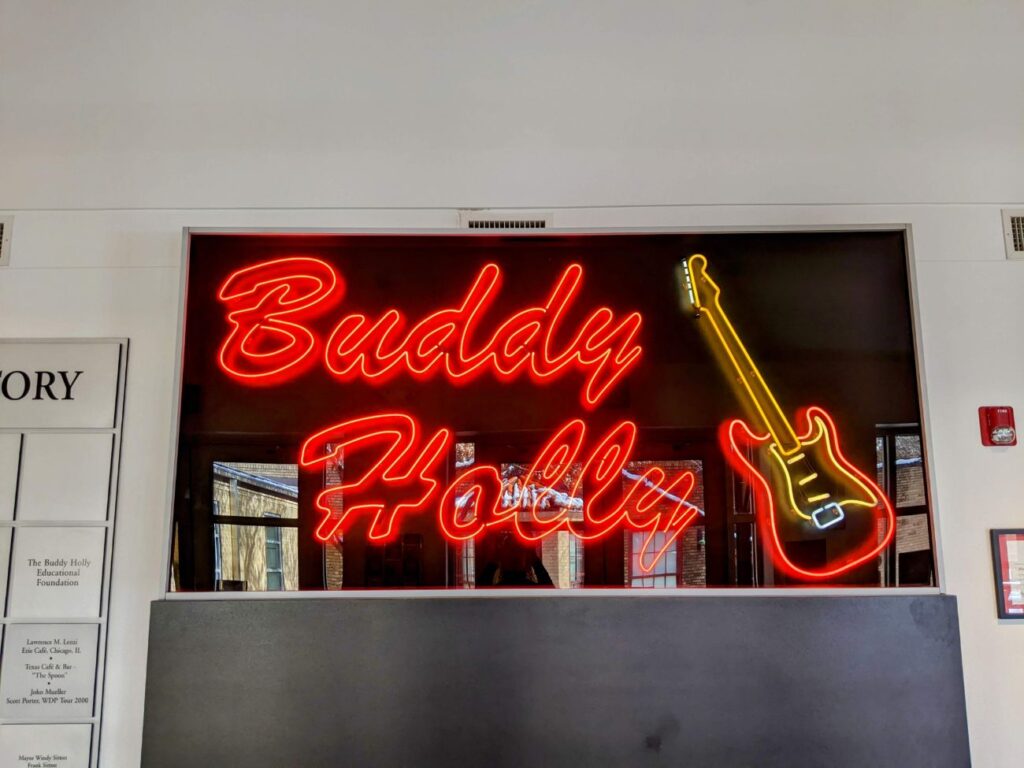
Death & Influence
Then you get to the part where Holly joins the “Winter Dance Party Tour” with Ritchie Valens and The Big Bopper. The three were killed when their plane went down in the snowy weather. Buddy Holly was only 22 when he died. Around this side of the exhibits, you see a motorcycle, like the one he bought on a whim, and even his famous black-rimmed glasses that were recovered from the plane crash.
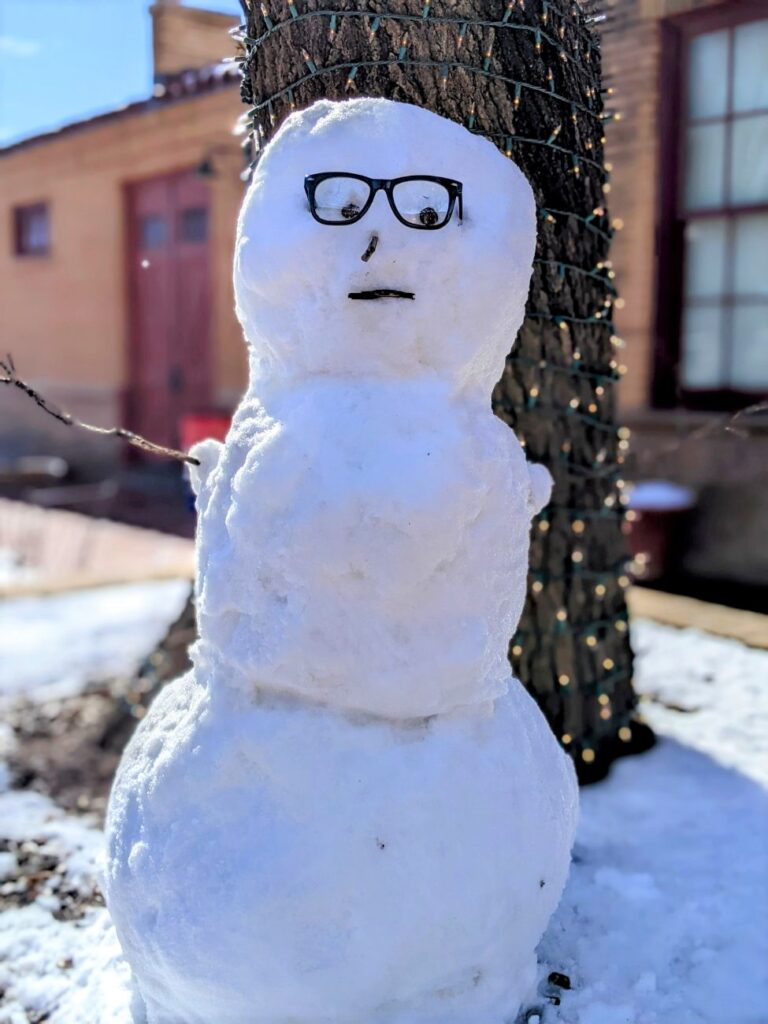
Buddy Holly’s most famous hits play on a loop in the room. And you get to hear in the film and the exhibits about Holly’s influence on the next generation of music makers. Paul McCartney talks about how all the early Beatle’s songs were trying to emulate Buddy Holly’s rockabilly sound. And Elton John made it his gimmick to wear bold glasses just like Holly.
In the third room to the left, there are some larger memorabilia pieces – Holly’s bedroom set from when he was a kid, and his dining set from his apartment with his new wife in New York City. Around the walls are letters from famous musicians, like Paul McCartney and Dolly Parton. Most of Holly’s guitar collection can be found here and in the main room.
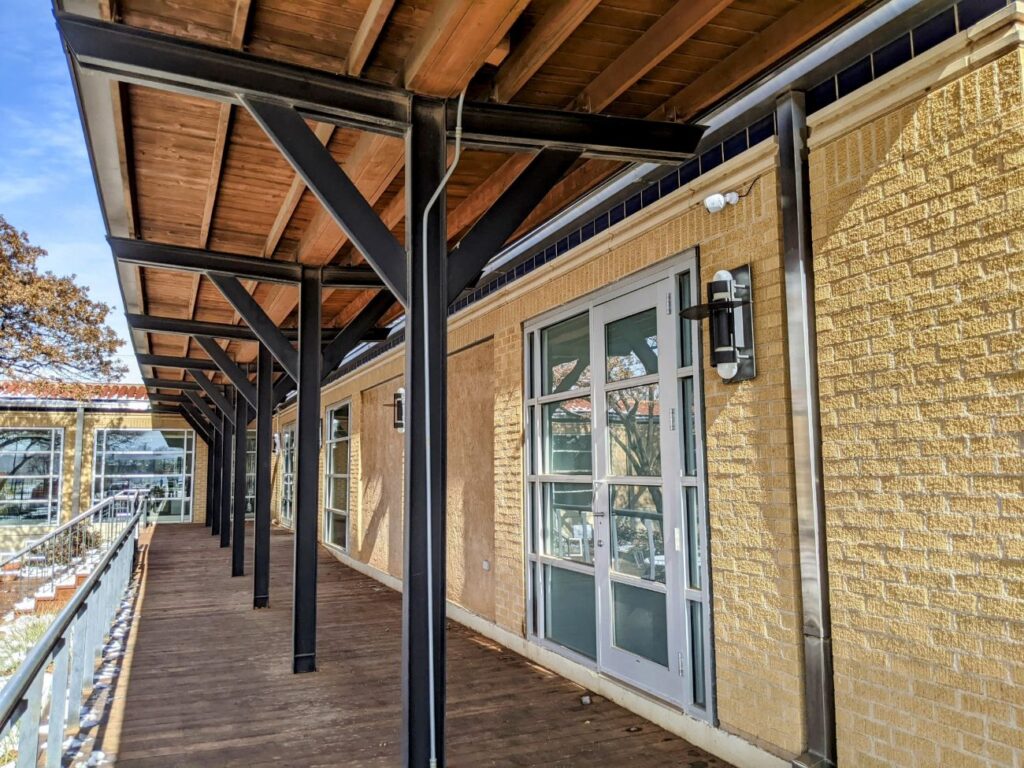
Art Gallery & Plaza
Part of the Buddy Holly Center is a contemporary art gallery in another part of the building. It wasn’t open when I visited, so I can’t comment too much. Now, it houses “A Cast of Blues,” featuring live casts from famous Blues musicians, along with photographs.
Across Crickets Avenue is a small park with a Buddy Holly statue. You can visit the park anytime, even if you don’t visit the museum.
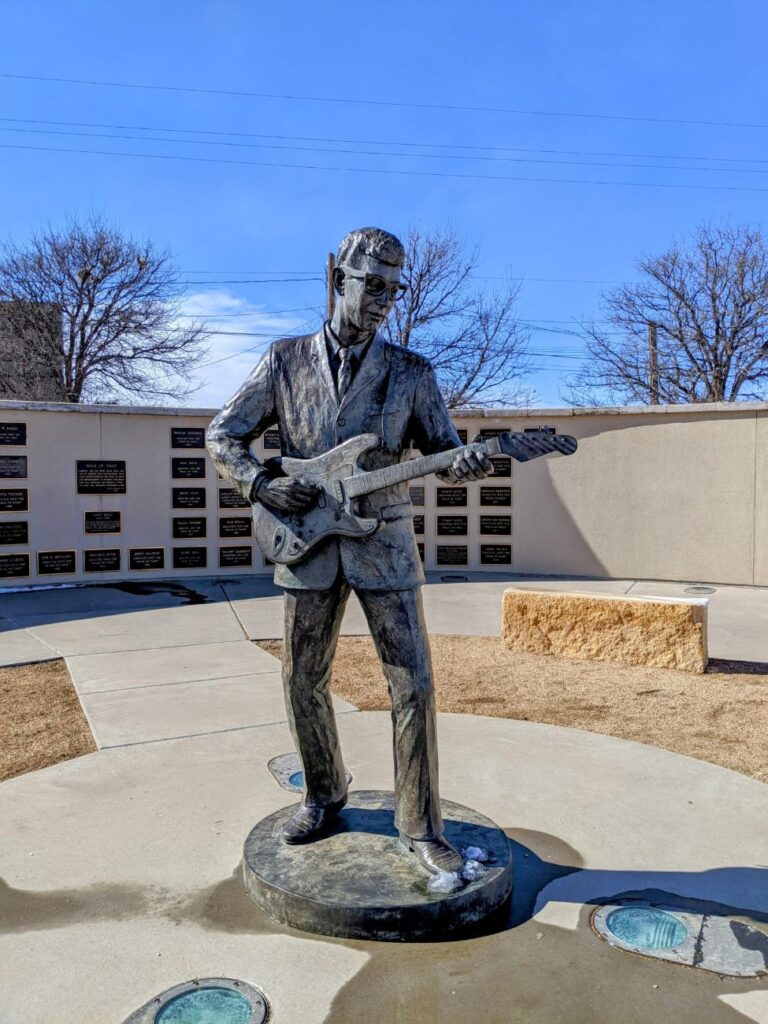
Hours & Admission
The Buddy Holly Center is open 10 am-5 pm Tuesdays-Saturdays and 1-5 pm on Sundays. It’s closed on Mondays and city holidays.
It costs $10 per adult, $8 for seniors 60+, $5 for kids 7-17, and students with ID. It’s free for active military members and kids 6 and under. It’s the same exact hours and prices as the Silent Wings Museum, and I paid $5 since I had been there first. I wonder if it works if you go to the Buddy Holly Center first. I’d bet it does, but ask first before you plan.
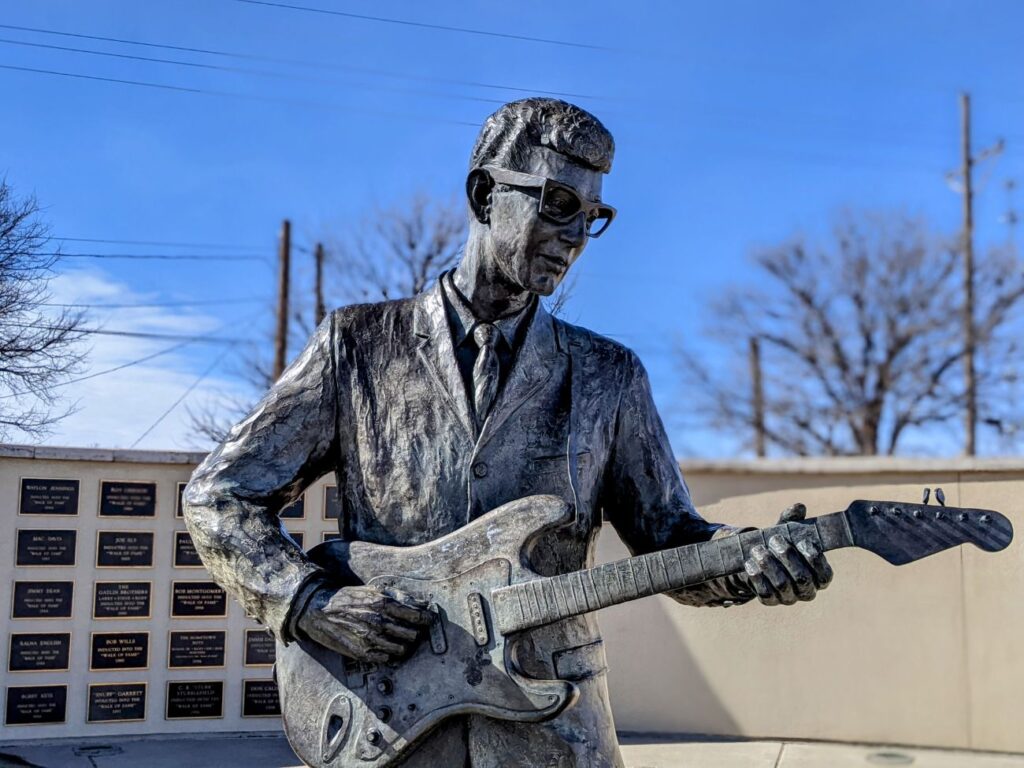
I really enjoyed it! I didn’t expect to hear from Sir Paul McCartney or Elton John on this visit or see a connection to my beloved Dolly Parton. It’s not just a good Buddy Holly museum, he’s a solid thread to follow in music history, which I think is a lot of fun. It’s a more powerful experience than I expected.
Be First to Comment